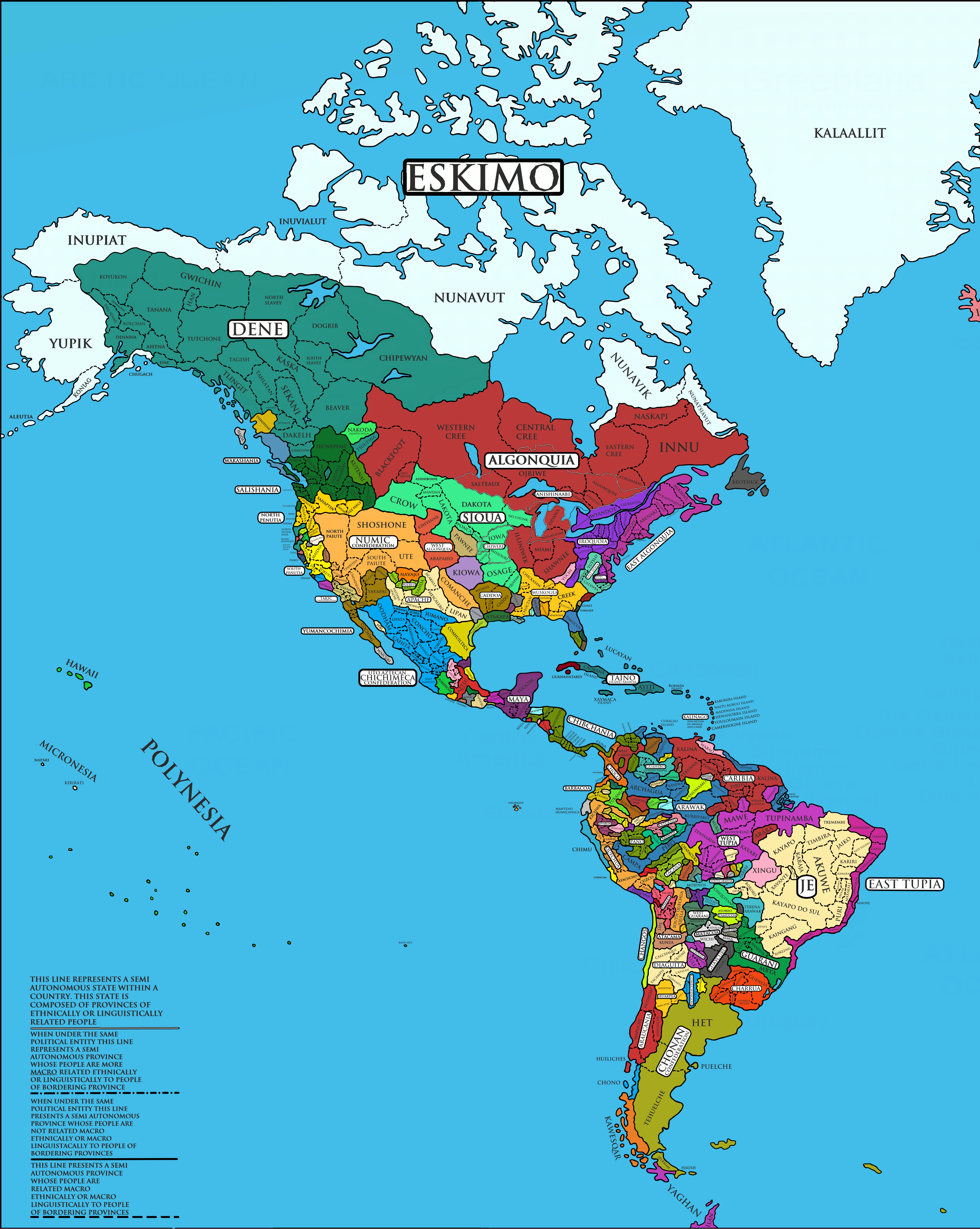Indigenous Peoples of the Americas Map


David Chen
Data Visualization Specialist
David Chen is an expert in transforming complex geographic datasets into compelling visual narratives. He combines his background in computer science ...
Geographic Analysis
What This Map Shows
The "Americas Native 1.7" map provides a detailed geographical visualization of the distribution of indigenous peoples across North and South America. This map illustrates the various cultural and linguistic groups, highlighting their historical territories and contemporary locations. The significance of this map goes beyond mere geographical representation; it invites us to understand the rich tapestry of cultures that have existed long before European colonization and those that continue to thrive today.
Deep Dive into Indigenous Peoples of the Americas
Indigenous peoples in the Americas comprise a diverse array of cultures, languages, and histories. From the Inuit of the Arctic to the Mapuche of Chile and Argentina, each group has a unique identity deeply rooted in the land they inhabit. According to estimates, there are over 500 distinct tribes in the United States alone, while Latin America is home to hundreds of additional groups, each with its own language, traditions, and social structures.
Interestingly, many indigenous peoples have maintained their ancestral languages, despite the pressures of globalization and assimilation. For instance, the Navajo Nation in the southwestern United States has revitalized the Navajo language through educational programs, demonstrating resilience in preserving their heritage.
One of the fascinating aspects of indigenous cultures is their profound connection to the land. Many tribes view themselves as stewards of the environment, holding a deep understanding of local ecosystems. This connection often manifests in their traditional practices, including agriculture, hunting, and resource management, which are adapted to their specific geographical contexts.
For example, the agricultural practices of the Iroquois Confederacy in the Northeastern United States are well-documented, especially their three sisters' farming technique, which involves growing corn, beans, and squash together in a mutually beneficial way. This method not only showcases an understanding of crop rotation but also reflects a harmonious relationship with nature.
Statistics reveal that indigenous peoples face significant challenges today. The World Bank estimates that indigenous populations are often at higher risk of poverty and marginalization compared to non-indigenous populations. In many regions, they are fighting for land rights and recognition of their sovereignty, which are crucial for maintaining their cultural identities.
Regional Analysis
When examining the map, it's essential to consider the distinct regions and the varying circumstances of indigenous groups within them. In North America, for instance, the Arctic region is primarily inhabited by Inuit communities, who have adapted to one of the harshest climates on Earth. Their traditional practices, such as fishing and hunting seals, are crucial for survival, revealing how geography shapes cultural practices.
In contrast, the Great Plains are home to tribes like the Lakota and Cheyenne, who traditionally relied on bison hunting. The decline of the bison population due to overhunting and habitat loss has had catastrophic effects on their way of life, pushing many to adapt to new realities.
Moving southward into Central and South America, we see a different landscape of indigenous cultures. The Amazon rainforest, for instance, is home to numerous tribes such as the Yanomami and the Kayapo. Their existence is increasingly threatened by deforestation and land encroachment, which raises critical questions about biodiversity and environmental conservation. Interestingly, efforts by these tribes to protect their land have led to significant international attention, emphasizing the importance of indigenous voices in environmental discussions.
In contrast, urban indigenous populations, such as those in Mexico City, face unique challenges related to urbanization, including loss of cultural identity and access to resources. However, these communities also engage in revitalization efforts to preserve their languages and traditions amidst a rapidly changing environment.
Significance and Impact
Understanding the distribution and current status of indigenous peoples is vital for several reasons. First, it sheds light on human diversity and the vast array of cultural practices that enrich our global heritage. Moreover, it emphasizes the ongoing struggles faced by these communities, including the fight for rights and recognition.
As we become more aware of these issues, it highlights the need for inclusive policies that respect indigenous rights and promote sustainable development. Current trends point towards a growing recognition of the importance of indigenous knowledge in addressing climate change and environmental degradation. Have you noticed that many conservation initiatives now seek to incorporate indigenous practices? This shift underscores the importance of collaboration between indigenous communities and broader society to ensure a sustainable future.
In conclusion, the "Americas Native 1.7" map serves as a crucial reminder of the rich history and ongoing realities of indigenous peoples across the Americas. By engaging with this map, we not only learn about geography but also about the resilience and vibrancy of cultures that have thrived for millennia. This knowledge is essential for fostering respect, understanding, and cooperation as we move forward into an increasingly interconnected world.
Visualization Details
- Published
- August 13, 2025
- Views
- 92
Comments
Loading comments...